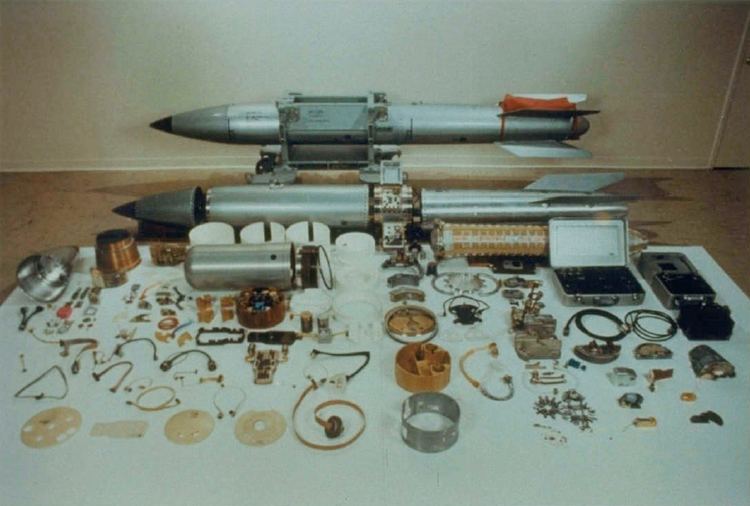The term warhead refers to the explosive or toxic material that is delivered by a missile, rocket, or torpedo.
Types of warheads include:
Explosive: An explosive charge is used to disintegrate the target, and damage surrounding areas with a blast wave.Conventional: Chemicals such as gunpowder and high explosives store significant energy within their molecular bonds. This energy can be released quickly by a trigger, such as an electric spark. Thermobaric weapons enhance the blast effect by utilizing the surrounding atmosphere in their explosive reactions.Blast: A strong shock wave is provided by the detonation of the explosive.Fragmentation: Metal fragments are projected at high velocity to cause damage or injury.Continuous rod: Metal bars welded on their ends form a compact cylinder of interconnected rods, which is violently expanded into a contiguous zig-zag-shaped ring by an explosive detonation. The rapidly expanding ring produces a planar cutting effect that is devastating against military aircraft, which may be designed to be resistant to shrapnel.Shaped charge: The effect of the explosive charge is focused onto a specially shaped metal liner to project a hypervelocity jet of metal, to perforate heavy armour.Explosively formed penetrator: Instead of turning a thin metal liner into a focused jet, the detonation wave is directed against a concave metal plate at the front of the warhead, propelling it at high velocity while simultaneously deforming it into a projectile.Nuclear: A runaway nuclear fission (fission bomb) or nuclear fusion (Thermonuclear weapon) reaction causes immense energy release.Chemical: A toxic chemical, such as poison gas or nerve gas, is dispersed, which is designed to injure or kill human beings.Biological: An infectious agent, such as anthrax spores, is dispersed, which is designed to sicken or kill humans.Often, a biological or chemical warhead will use an explosive charge for rapid dispersal.
Type of detonators include

